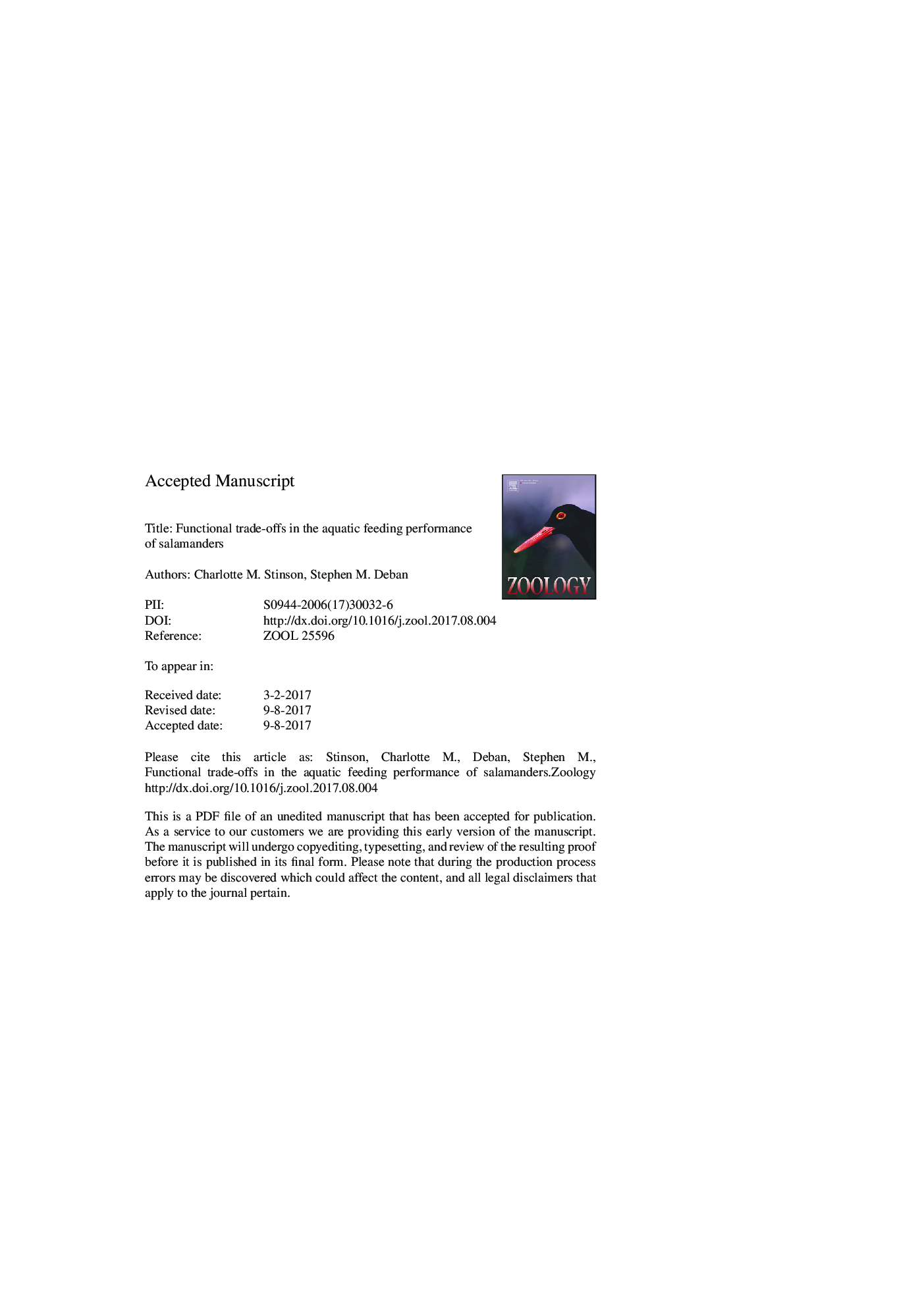| کد مقاله | کد نشریه | سال انتشار | مقاله انگلیسی | نسخه تمام متن |
|---|---|---|---|---|
| 8627163 | 1568633 | 2017 | 33 صفحه PDF | دانلود رایگان |
عنوان انگلیسی مقاله ISI
Functional trade-offs in the aquatic feeding performance of salamanders
ترجمه فارسی عنوان
کارآیی در کارایی آبزیان سالامندرها
دانلود مقاله + سفارش ترجمه
دانلود مقاله ISI انگلیسی
رایگان برای ایرانیان
موضوعات مرتبط
علوم زیستی و بیوفناوری
علوم کشاورزی و بیولوژیک
علوم دامی و جانورشناسی
چکیده انگلیسی
During aquatic feeding salamanders use the hyobranchial apparatus to capture prey. The hyobranchial apparatus depresses the floor of the mouth, effectively expanding the oropharyngeal cavity and generating suction. Within the family Salamandridae, there is a wide range of ecological diversity, with salamanders being terrestrial, semi-aquatic, or aquatic as adults. The purpose of this research was to quantify the diverse morphology and suction feeding performance of aquatically feeding salamandrids. We hypothesized that a more robust hyobranchial apparatus morphology would yield increased aquatic feeding performance. When compared to semi-aquatic newts, the fully aquatic species Paramesotriton labiatus had greater mineralization of the hyobranchial apparatus, as well as relatively more narrow basibranchial and wider ceratobranchial I + II complexes. These morphological differences coincide with greater aquatic feeding performance. Kinematics from high-speed videography revealed that maximum mouth opening velocity and acceleration were approximately two and five times greater, respectively, in Paramesotriton, and hyobranchial depression acceleration was found to be approximately three times greater than in the semi-aquatic species Pleurodeles waltl, Notophthalmus viridescens, Triturus dobrogicus, and Cynops cyanurus. Using digital particle image velocimetry, peak and average fluid velocity generated in Paramesotriton during suction feeding events were found to be 0.5 m sâ1 and 0.2 m sâ1, respectively, doubling that of all semi-aquatic species. These findings reveal that specialized morphology increases aquatic feeding performance in a fully aquatic newt.
ناشر
Database: Elsevier - ScienceDirect (ساینس دایرکت)
Journal: Zoology - Volume 125, December 2017, Pages 69-78
Journal: Zoology - Volume 125, December 2017, Pages 69-78
نویسندگان
Charlotte M. Stinson, Stephen M. Deban,
